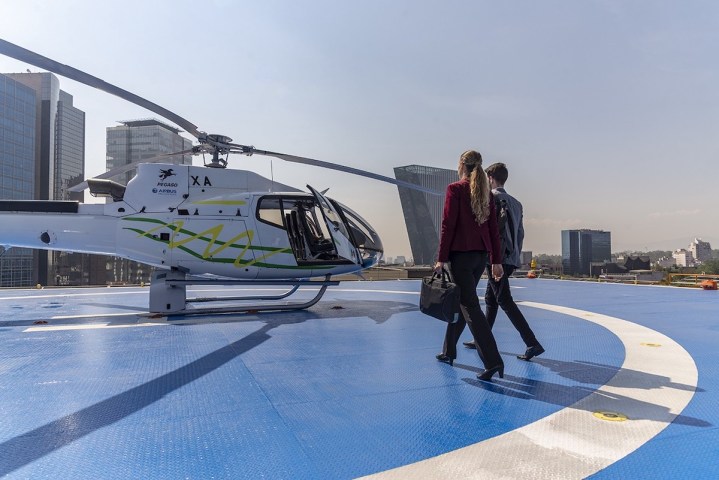
As Uber prepares to spin the rotors for the first time on its on-demand helicopters, Airbus-backed Voom has revealed it’s also getting ready to expand its own similar service within the U.S.
Currently operating in San Francisco, as well as two cities in Brazil and Mexico, two-year-old Voom will begin adding more locations to its app-based helicopter service in the fall, Fast Company reported.
The news comes just a few weeks after ridesharing company Uber announced its own helicopter shuttle service between Manhattan and nearby JFK Airport, set for launch in July 2019.
Voom is yet to reveal exactly where it will operate its air taxis, so it’s too early to say if it’ll go head to head with the competition, which besides Uber also includes Blade.
Using the tagline, “Book in seconds, fly in minutes,” Voom promises that its fares will be “competitive with ground alternatives.” Looking at its San Francisco service as a guide, flights of seven minutes are likely to cost around $150.
Uber’s Manhattan-JFK flights will take eight minutes and cost between $200 and $225 per person — about three times what you’d pay for the journey in a regular Uber car or similar taxi service. Uber says it will offer a door-to-door service, using its own cars to collect and drop off riders at the start and finish of the journey.
The air taxi services will use conventional helicopters, but the expectation is that at some point in the future, when technology and regulators allow, they’ll switch to electric-powered Vertical Take-off and Landing (VTOL) aircraft that are both cleaner and quieter, and therefore better suited for urban environments. Uber has even created its own unit called Uber Elevate to work toward that goal.
Airbus, too, is investing heavily in electric-powered VTOL technology, recently taking the wraps off the autonomous Vahana Alpha Two, its second full-scale demonstrator aircraft and the first with a finished interior. The aircraft features an eight-propeller tilt-wing, while radar, camera, and lidar technology keep the Vahana clear of any hazards while in the air.
There are plenty of exciting developments happening now in the world of small-size electric aircraft, with a growing number of companies creating a range amazing of designs, many geared toward flying-taxi services.
Editors' Recommendations
- Flying taxi service coming to Chicago using eVTOL aircraft
- Uber sells its flying-taxi business to another flying-taxi business
- Audi grounds flying taxi project as it rethinks Airbus partnership
- Flying taxis: Kitty Hawk and Boeing team up on urban mobility
- Uber’s new helicopter service lets riders smile wryly at the gridlock below


